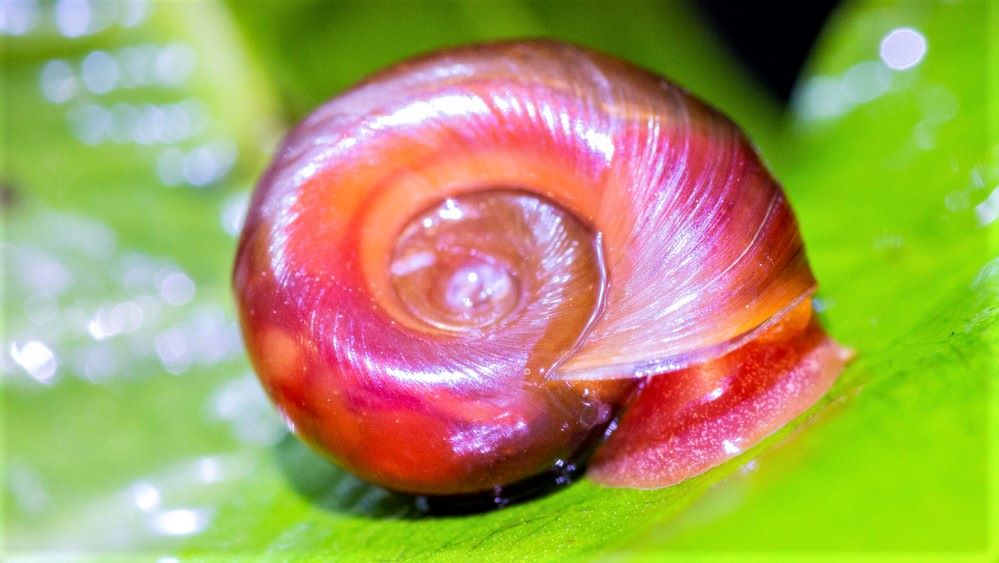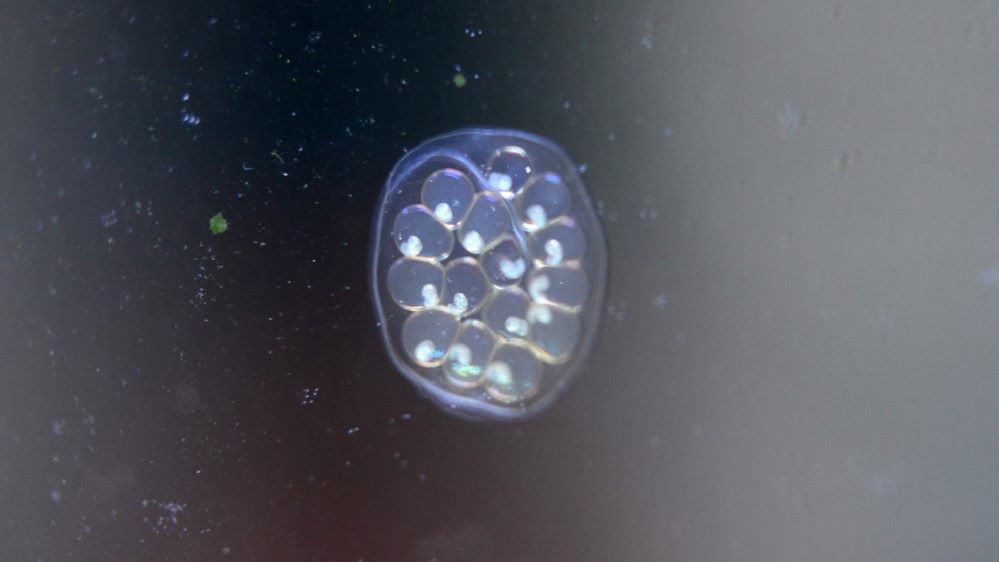I love these snails, In the early days of my shrimp keeping journey, I’d often find myself marveling at their peaceful existence and wondering, “Just how do these captivating creatures reproduce?” Maybe you’ve found yourself in a similar situation or noticed a sudden population boom in your aquarium and are curious about their breeding habits. Whichever the case, delving into the breeding process of Ramshorn snails can add a fascinating new dimension to your shrimp keeping experience.
Ramshorn snails are hermaphrodites, meaning each snail possesses both male and female reproductive organs. They can self-fertilize, but usually prefer to mate with another snail. After mating, they lay small, gelatinous egg clusters on surfaces like plants or the aquarium glass. The eggs hatch into tiny snails after about two weeks.
I’ve spent countless years observing the tranquil life inside my aquarium, and over that time, I’ve developed a particular fascination for Ramshorn snails. Their slow, graceful movements, diligent cleaning habits, and unique shell shape have always intrigued me. However, their breeding habits remained a mystery for a long time.

I remember the first time I noticed a cluster of tiny, translucent eggs on the glass of my aquarium. I was puzzled, wondering where they had come from. Over time, I watched as more clusters appeared and eventually hatched into minuscule snails . This sparked my curiosity and led me on a journey to understand the breeding habits of these captivating creatures.
. This sparked my curiosity and led me on a journey to understand the breeding habits of these captivating creatures.
In the following sections, we’ll delve into the fascinating world of Ramshorn snail breeding . We’ll explore their reproductive habits, the conditions they need to breed, and how to manage their population in your aquarium. So, buckle up, fellow shrimp keepers, and prepare for an exciting deep dive into the life of Ramshorn snails.
. We’ll explore their reproductive habits, the conditions they need to breed, and how to manage their population in your aquarium. So, buckle up, fellow shrimp keepers, and prepare for an exciting deep dive into the life of Ramshorn snails.
How do Ramshorn Snails Mate?
Ramshorn snails are fascinating creatures, especially when it comes to their mating habits. As hermaphrodites, each snail carries both male and female reproductive organs, which means they have the ability to self-fertilize.
However, they usually prefer to find a partner. The mating process begins when two snails approach each other and engage in a sort of dance, circling around each other for a while. This dance can last anywhere from a few minutes to a few hours. Once the dance is complete, the snails will exchange sperm using a specialized organ called a love dart.
This exchange allows both snails to fertilize their eggs. After the mating process, each snail will go its separate way and begin the process of laying eggs. It’s a fascinating process, a delicate dance of nature that takes place right in your aquarium.
So, the next time you see your snails engaged in a slow, circling dance, you’ll know they’re not just playing around—they’re participating in the intricate ballet of snail reproduction.
What Conditions do Ramshorn Snails Need to Breed?
| Parameter | Ideal Range |
|---|---|
| Water Temperature | 70-78°F (21-25°C) |
| pH | 7.0-7.5 |
| General Hardness (GH) | 7-14°dGH |
| Carbonate Hardness (KH) | 3-10°dKH |
| Lighting | Moderate |
| Diet | Algae, decaying plant matter, uneaten fish food, vegetables |
Calcium Supplement | Cuttlebone, eggshells |
These parameters provide a conducive environment for Ramshorn snails to breed. However, it’s important to remember that these snails are quite adaptable and can breed in a range of conditions. The parameters listed above are ideal conditions that can encourage their reproduction.
Breeding Ramshorn snails isn’t a Herculean task, but it does call for a keen eye and a bit of know-how. These adaptable creatures can thrive and reproduce in various environments, but certain conditions can boost their breeding activity.
A key factor is water temperature. Ramshorn snails are fans of warmth, favoring temperatures between 70 and 78 degrees Fahrenheit (21-25 degrees Celsius). In this cozy range, their metabolism kicks into high gear, potentially leading to more breeding.
Food availability is another significant aspect. Ramshorn snails aren’t picky eaters—they’ll happily munch on algae, decaying plant matter, and leftover fish food. A buffet of food options can spur their reproduction, as a well-fed snail is a breeding snail.
snail.
Let’s not forget about egg-laying surfaces. Ramshorn snails deposit their eggs on hard surfaces, such as the aquarium glass, decorations, or plant leaves. The more surfaces you provide, the more likely they are to breed.
Now, here’s a pro tip: supplementing their diet with calcium-rich foods like cuttlebone or eggshells can help ensure healthy shell growth. And don’t forget to serve up plenty of greens like spinach and zucchini—they’re snail favorites!
or eggshells can help ensure healthy shell growth. And don’t forget to serve up plenty of greens like spinach and zucchini—they’re snail favorites!
Remember, while it’s fascinating to watch these creatures breed, keeping their population in check is equally important to prevent overcrowding. Striking a balance among these factors will help you foster a healthy, harmonious aquarium environment. Happy Snail Keeping!
How Can I Identify Ramshorn Snail Eggs in My Aquarium?

Identifying Ramshorn snail eggs in your aquarium can be a delightful discovery. These eggs are typically laid in clusters and have a distinctive appearance that can help you spot them. They are often found on hard surfaces such as the aquarium glass, decorations, or the leaves of aquatic plants.
can be a delightful discovery. These eggs are typically laid in clusters and have a distinctive appearance that can help you spot them. They are often found on hard surfaces such as the aquarium glass, decorations, or the leaves of aquatic plants.
The egg clusters of Ramshorn snails are small, round, and gelatinous. They are usually transparent or slightly milky in color, allowing you to see the tiny, round eggs within. Each cluster can contain anywhere from a dozen to several dozen eggs.
One interesting aspect of Ramshorn snail eggs is that you can often see the developing snails inside the eggs if you look closely. As the eggs mature, the tiny snails inside become more visible, and you might even be able to see their characteristic coiled shells.
So, if you notice small, gel-like clusters attached to surfaces in your aquarium, take a closer look. You might just have a new generation of Ramshorn snails on the way! But remember, while it’s exciting to witness the cycle of life in your aquarium, it’s also important to keep an eye on the snail population to prevent overpopulation.

How Can I Manage the Population of Ramshorn Snails in My Aquarium?
Managing the population of Ramshorn snails in your aquarium is an essential aspect of maintaining a balanced ecosystem. While these snails can be beneficial for your aquarium, providing natural algae control and helping to break down decaying matter, an unchecked population can lead to problems.
One of the most effective ways to manage the population of Ramshorn snails is by controlling their food supply. These snails are opportunistic feeders and will breed more prolifically when there is an abundance of food. By avoiding overfeeding your fish and promptly removing uneaten food and decaying plant matter, you can limit the resources available for the snails, thereby controlling their reproduction.
Manual removal is also an option. If you notice a large number of snails or egg clusters, you can remove them by hand. This can be a time-consuming process, but it allows for immediate population control.
Lastly, consider using snail traps. These are devices that attract snails with bait and then trap them inside. They can be an effective way to reduce the snail population, especially in larger aquariums.
The goal is not to eradicate the snails completely but to maintain a balance. A healthy population of Ramshorn snails can contribute positively to your aquarium environment. It’s all about finding the right balance and keeping things in check.
In Summary: Breeding and Managing Ramshorn Snails
In the world of shrimp keeping, understanding the habits and needs of all your aquarium inhabitants, including the humble Ramshorn snail, is key.
From their unique mating dance to their preference for warm, food-rich environments, these snails are fascinating creatures that add another layer of intrigue to your aquarium. Identifying their egg clusters can be a joy, but remember, it’s also crucial to keep their population in check to maintain a balanced ecosystem.
Whether you’re just starting your journey into shrimp keeping or you’re a seasoned aquarist, I hope this guide has provided you with valuable insights into the world of Ramshorn snails.
If you have any further questions or need additional guidance, don’t hesitate to reach out. And if you can’t reach me here, check out the vibrant community of shrimp keepers on Facebook. They’re a treasure trove of knowledge and experience, always ready to help a fellow enthusiast.
On a final note, remember that every creature in your aquarium, from the smallest snail to the largest shrimp, plays a part in creating a harmonious underwater world.
So, keep observing, keep learning, and most importantly, keep enjoying the journey.
Happy Snail Keeping!
FAQ on Breeding Ramshorn Snails
Q. Are ramshorn snails easy to breed?
A. Yes, Ramshorn snails are quite easy to breed. As long as you have at least one snail, sufficient food, and water, you are guaranteed to have them reproduce.
Q. How do ramshorn snails breed?
A. Ramshorn snails are hermaphrodites, meaning each snail has both male and female reproductive organs. They can self-fertilize, but they usually prefer to mate with another snail. After mating, they lay small, gelatinous egg clusters on surfaces like plants or the aquarium glass.
Q. How quickly do ramshorn snails multiply?
A. The rate at which Ramshorn snails multiply can depend on several factors, including the availability of food and the conditions in the aquarium. However, they are known for their rapid reproduction rate and can quickly populate an aquarium if conditions are favorable.
Q. What temp do ramshorn snails lay eggs?
A. Ramshorn snails prefer warmer temperatures for breeding, typically between 70 and 78 degrees Fahrenheit (21-25 degrees Celsius). At these temperatures, their metabolism is more active, which can lead to increased breeding.
Q. Can one ramshorn snail reproduce?
A. Yes, since Ramshorn snails are hermaphrodites, a single snail can self-fertilize and lay eggs. However, they usually prefer to mate with another snail if one is available.
